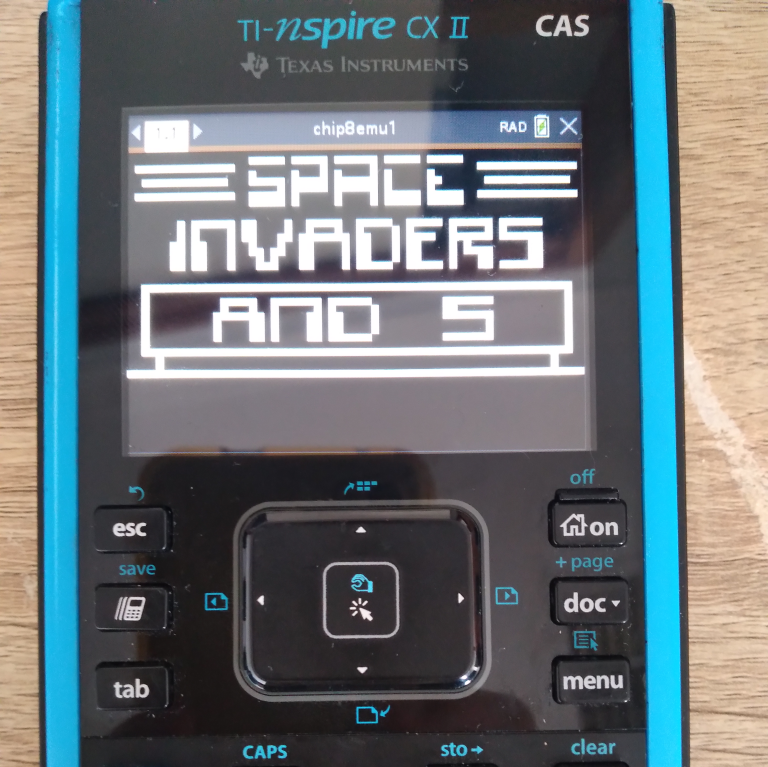Edward
CHIP-8 Emulator
As a high school student I was very excited to finally own my own graphing calculator. And no, it wasn’t because I was very excited to plot parabolas and find roots of polynomials. For years on YouTube and other websites like Hackaday I had seen the homebrew/modding/jailbreaking community showcase the mind-bending capabilities of graphing calculators powerful enough to run games like Doom and even Minecraft!
It follows then, that I was very excited to own a TI-Nspire CX II CAS graphing calculator for use at school. However, at the time, the calculator model was relatively newly released. Unlike for the original TI-Nspire, there were no public jailbreaks for the device to allow arbitrary code execution! Instead, I was stuck with the (not very good) default programming capabilities TI decided to put on the device. At the time the only programming languages available were TI-Basic and Lua (nowadays Python is supported as well), and the code had to be saved in a proprietary .tns notebook bundle file.
Given the lackluster selection of user-made programs under these constraints, I decided to write my own CHIP-8 emulator in Lua for the TI-Nspire CX II CAS. CHIP-8 was not a real processor ISA, but rather a bytecode format which ran on a variety of mid-1970s computers through the CHIP-8 virtual machine (kind of like the precursor to the JVM, also, wow they had VMs in the 1970s!?). I decided on writing a CHIP-8 emulator because it seemed relatively easy to emulate and there were a good selection of simple games to have fun with like Space Invaders and Tetris, as well as some more modern games made by hobbyists (My personal favourite).

I encountered a variety of challenges in developing this software, most principally of which was that I had almost never written any Lua code before and I had never programmed any kind of emulator. As such, I decided to loosely follow an online tutorial for developing a CHIP-8 emulator in C++ for a desktop computer, adapting the code to Lua and to the specifics of the TI-Nspire Lua API reference. Using my existing knowledge of programming languages such as Python, JavaScript and C, I was able to roughly understand the C++ code (I had barely ever used C++) and quickly adapt and pick up a working understanding of Lua. As such, with copious consultation of the Nspire Lua API reference guide, I was successful in creating a working emulator.

Due to the platform limitations of the TI-Nspire, there are some complexities in loading ROMs into the emulator however. A non-jailbroken Nspire requires all code and data to be stored inside a proprietary .tns file format, and there are no file io operations permitted for the program. As such, I wrote a Python script to convert CHIP-8 ROM files into a Lua table of bytes which would be copy pasted into the emulator program source code before running.